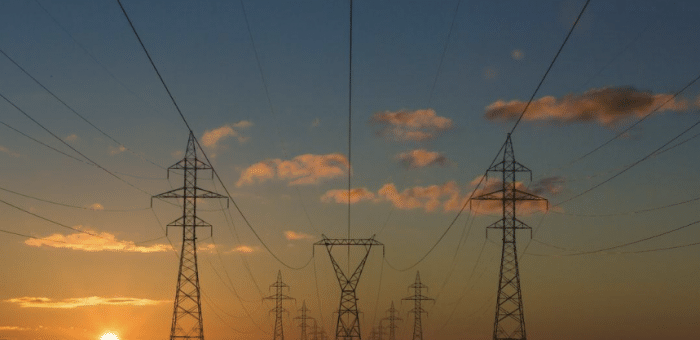One of the top benefits of living in Texas’ deregulated electricity market is having options. Instead of one or two energy providers, you can choose from dozens. Moreover, you can also select from many of the energy plans a retail energy provider offers. Have you heard of the Texas electricity facts label? Don’t worry, we’ll tell you what it means.
Having options means you can compare different providers and electricity plan options to ensure you’re not going to overpay for your home’s electricity. However, the process can feel a bit overwhelming. Power Wizard simplifies the process by helping you narrow down your options, making it easier to find the right fit.
The electricity facts label (EFL) can also come in handy when shopping for a new energy plan. Along with helping you compare your options side by side, reading this vital document prevents unwanted surprises when your monthly utility bills arrive. Here’s what you need to know.
[ctafirst]
What Is a Texas Electricity Facts Label?
The electricity facts label is a legal disclosure that the Public Utility Commission of Texas (PUCT) requires every retail energy company to have for every plan they offer. Essentially, it breaks down your power bills, helping you understand what you’re paying for every month. After you sign up for a plan, it also serves as a reference point, giving you something to compare your bills against to ensure the charges match.
Most energy providers will send an EFL at time of enrollment. You can also request a copy at any point. Whether you want to pay closer attention to your energy costs or choose a new plan, this is an invaluable resource.
The Items on a Texas Electricity Facts Label
Packed full of information, the goal of an EFL is to provide complete transparency about the various factors that affect your energy bills. Knowing how to read the electricity facts label details can help you avoid getting blindsided by energy charges you weren’t aware of.
The PUCT standardized the format of electricity facts sheets as well as the information every retail energy provider must supply.
Here’s the information you’ll find on any retail energy provider’s electricity facts sheet:
1. Energy Rate and Average Rate Per KWh
When shopping for a new electricity plan, the first detail most energy customers look for is the price per kilowatt-hour (kWh). Also known as the energy rate (or simply the rate), this is what the electricity company charges for each kilowatt-hour of power you use.
Around that, you’ll see a table containing the average price per kWh for the monthly use of 500, 1,000, and 2,000 kWh of electricity. The information here provides examples of what you can expect, if you use similar amounts of power. Retail energy providers calculate these figures based on their energy charge, delivery charge, and other fixed fees.
Note: The average rate per kWh calculations also include tiered rates, bill credits, incentives, or promotions. While your actual average rate will vary based on your exact monthly usage, these factors indicate that your average cost could be significantly different from the examples provided in the chart.
[ctafirst]
2. Base Charge, Delivery Charge, and Monthly Charge
Most retail energy providers charge a flat monthly fee (known as a base charge) for their services. This fee is sometimes the same or can vary based on your usage. Read the fine print to understand how the base charge works for your plan. However, every power company sets its own base charge. Some companies don’t charge one at all.
While you can choose your energy provider, you can’t select your Transmission and Distribution Utility (TDU). Also known as a Transmission and Distribution Service Provider (TDSP), this is the company responsible for getting your electricity from power plants to your home. It’s also responsible for maintaining the lines in its service area and restoring power after an outage.
Every TDU charges a fee, known as a delivery charge, which typically consists of a flat monthly fee and a per kWh cost. Companies charge these fees to energy providers, who pass them on to their customers. Additionally, delivery charges are subject to change periodically (typically twice a year).
Note: Some electricity facts sheets show delivery charges as a separate item, but others bundle them with the provider’s energy rate (called a “bundled energy charge”). That bundling can make it more difficult to compare the actual energy costs.
Finally, an EFL will also show any other fixed recurring fees the energy provider charges. These charges can vary from one company to the next (some may not have any) and may include:
- Minimum use charge
- Daily use fee
- State and local taxes
- PUCT assessments
3. Contract Details and Plan Type
Below the pricing information section is the disclosure chart. This section contains your contract details, including the contract term (one month, 12 months, etc.), and whether or not your price can change during that term.
The disclosure chart also tells you what type of plan or product a specific electricity plan is. There are several different plan types, and they all affect how your energy provider charges you for your energy usage:
- Fixed-rate: Your electricity rate doesn’t change during your contract period.
- Variable rate: Also called a month-to-month plan, you have no contract, but your rate is subject to change every month.
- Prepaid: Also known as a “pay-as-you-go” plan, you deposit money into an account that will pay for your future electricity use.
4. Renewable Content Percentage
Many plans include a percentage of renewable energy. The EFL will specify what percentage of the electricity purchased comes from renewable or green sources. The EFL will also provide the statewide average for renewable content. While this information doesn’t affect your cost, some consumers use this information to decide what energy provider to choose.
Note: Several electricity companies offer 100% renewable electricity plans.
5. Information on Electricity Provider
An EFL will provide the name and contact details of the electricity provider for the plan it’s breaking down. If you ever see a charge you weren’t expecting or notice potential discrepancies between your bills and the EFL, you’ll have this information readily available.
6. Cancellation Rate
If you sign up for a plan with a contract and you decide you want to change energy providers before the end of your term, there’s a chance you’ll have to pay an early termination fee (ETF) or cancellation rate. The EFL will tell you if there’s a penalty for canceling your contract early and, if so, how much that penalty will cost.
7. Extra Fees Under the Terms of Service
Finally, if the energy provider charges any other fees under their terms of service, they must provide that information on the EFL or within the Terms of Service. The fees are usually listed in a section called, “Other Key Terms and Questions.” These fees are usually non recuring fees and may include:
- Late payment fees
- Returned check fees
- Service restoration fees
How the EFL Is Used To Calculate Monthly Electricity Bill
Understanding an electricity facts sheet gives you a better idea of how an energy provider calculates your monthly bills. Mostly, electricity facts label calculator would do something like this:
- (Energy rate X kWh used) + retail energy provider base charge + fixed TDU charge + (variable TDU charge X kWh used) + any other fixed monthly fees = electricity cost
Note: Variables like tiered rates, bill credits, time of use factors, and more can have a significant impact on your monthly bills. If you only looked at the advertised rates, you could be in for quite a surprise.
Save on Your Charge per KWh With a Better Electricity Plan
Reading and understanding electricity facts labels can help you better understand how retail energy providers charge you for your monthly power consumption. It can help you estimate your monthly energy bills and spot any discrepancies between your plan and billing statements.
A Texas electricity facts label can also help you compare different plans side by side. However, this process can be time-consuming and frustrating. Let Power Wizard save you time and energy by doing the hard work for you. After you input some basic information, our online shopping tool will scour hundreds of EFLs and select the best fits for your needs.
If you’re ready to find the right energy plan, visit Power Wizard to start shopping today!
[ctafirst]






